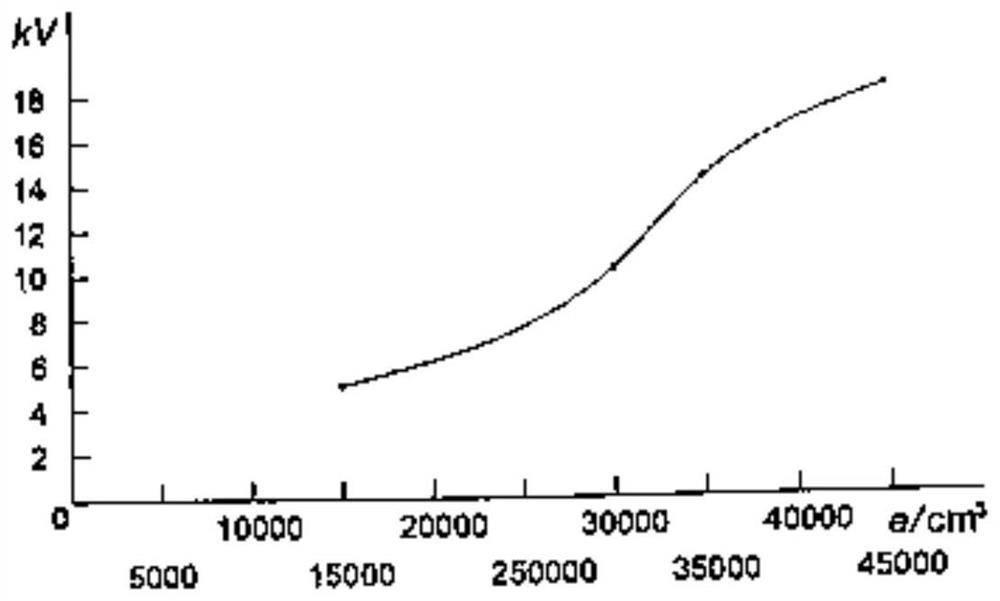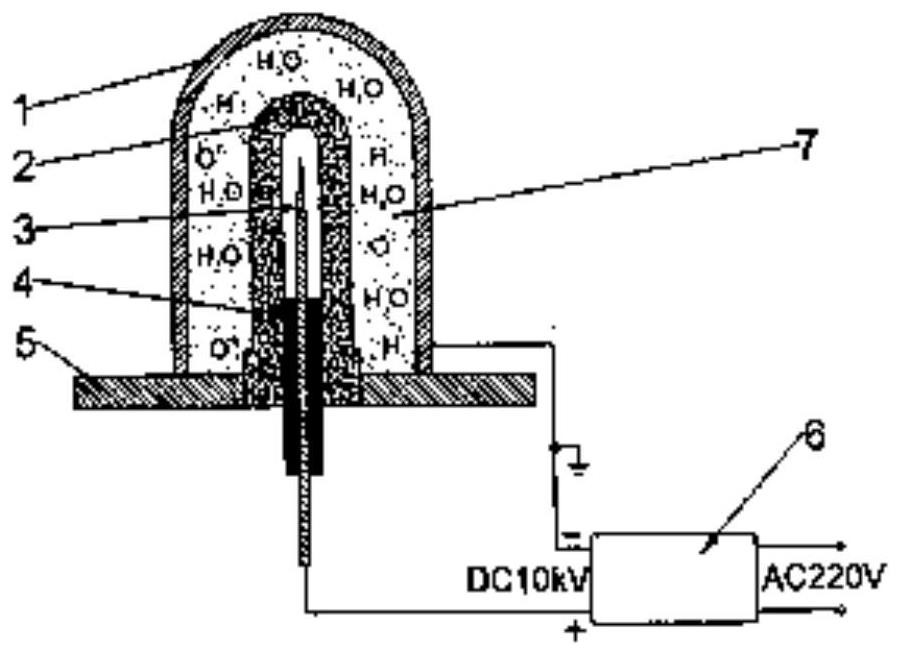Polyhedral ionic compound composite ceramic, preparation method and application thereof, and oxonium ion exciter
A technology of ionic compounds and composite ceramics, applied in the direction of plasma, electrical components, etc., can solve the problems of single types and limitations, and achieve the effect of simple structure, fast and efficient acquisition
- Summary
- Abstract
- Description
- Claims
- Application Information
AI Technical Summary
Problems solved by technology
Method used
Image
Examples
Embodiment 1
[0048] 1. Polyhedral ionic compound composite ceramics
[0049] The above-mentioned polyhedral ionic compound composite ceramic is prepared by including the following raw materials in parts by weight:
[0050] 40 parts of α-alumina, 15 parts of iron tetroxide, 10 parts of zirconia, 10 parts of organic-inorganic hybrid thorium polyate, 10 parts of calcium fluoride and 15 parts of anti-fluorite compounds;
[0051] The inverse fluorite type compound is lithium oxide, sodium oxide or potassium oxide.
[0052] 2. Preparation method
[0053] The preparation method of the above-mentioned polyhedral ionic compound composite ceramics, the preparation method comprises the following steps:
[0054] (a) each raw material is weighed according to parts by weight, and then each raw material is ball-milled to a mesh size of not less than 3000 mesh and mixed to obtain a mixed material;
[0055] (b) performing vacuum granulation and extrusion molding on the mixed material to obtain a blank, ...
Embodiment 2
[0058] 1. Polyhedral ionic compound composite ceramics
[0059] The above-mentioned polyhedral ionic compound composite ceramic is prepared by including the following raw materials in parts by weight:
[0060] 45 parts of α-alumina, 12 parts of iron tetroxide, 12 parts of zirconia, 8 parts of organic-inorganic hybrid thorium polyate, 8 parts of calcium fluoride and 15 parts of anti-fluorite compounds;
[0061] The inverse fluorite type compound is lithium oxide, sodium oxide or potassium oxide.
[0062] 2. Preparation method
[0063] The preparation method of the above-mentioned polyhedral ionic compound composite ceramics, the preparation method comprises the following steps:
[0064] (a) each raw material is weighed according to parts by weight, and then each raw material is ball-milled to a mesh size of not less than 3000 mesh and mixed to obtain a mixed material;
[0065] (b) performing vacuum granulation and extrusion molding on the mixed material to obtain a blank, wh...
Embodiment 3
[0068] 1. Polyhedral ionic compound composite ceramics
[0069] The above-mentioned polyhedral ionic compound composite ceramic is prepared by including the following raw materials in parts by weight:
[0070] 35 parts of α-alumina, 15 parts of iron tetroxide, 8 parts of zirconia, 12 parts of organic-inorganic hybrid thorium polyate, 12 parts of calcium fluoride and 18 parts of anti-fluorite compounds;
[0071] The inverse fluorite type compound is lithium oxide, sodium oxide or potassium oxide.
[0072] 2. Preparation method
[0073] The preparation method of the above-mentioned polyhedral ionic compound composite ceramics, the preparation method comprises the following steps:
[0074] (a) each raw material is weighed according to parts by weight, and then each raw material is ball-milled to a mesh size of not less than 3000 mesh and mixed to obtain a mixed material;
[0075] (b) performing vacuum granulation and extrusion molding on the mixed material to obtain a blank, w...
PUM
 Login to View More
Login to View More Abstract
Description
Claims
Application Information
 Login to View More
Login to View More - R&D
- Intellectual Property
- Life Sciences
- Materials
- Tech Scout
- Unparalleled Data Quality
- Higher Quality Content
- 60% Fewer Hallucinations
Browse by: Latest US Patents, China's latest patents, Technical Efficacy Thesaurus, Application Domain, Technology Topic, Popular Technical Reports.
© 2025 PatSnap. All rights reserved.Legal|Privacy policy|Modern Slavery Act Transparency Statement|Sitemap|About US| Contact US: help@patsnap.com


